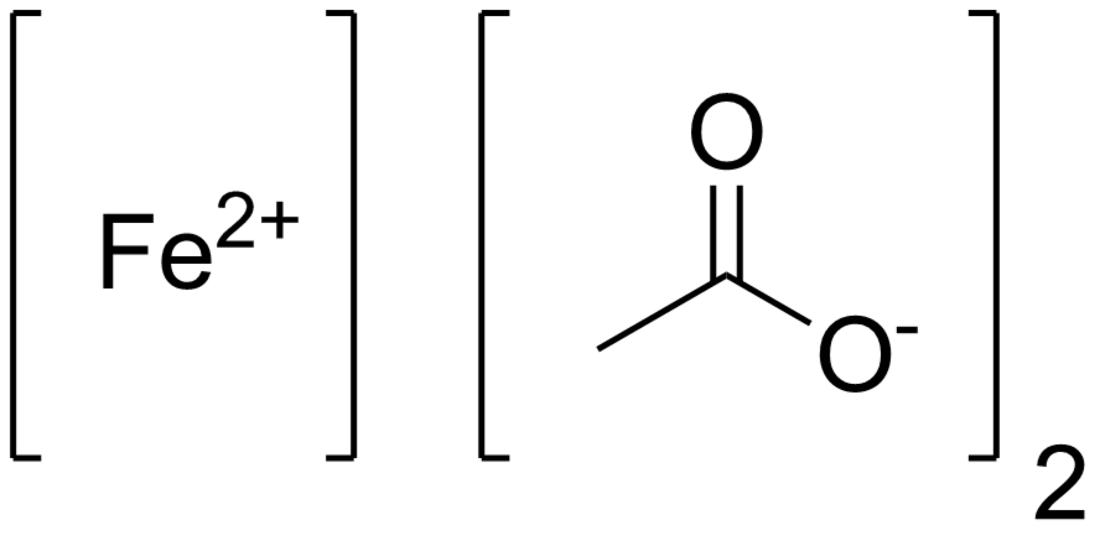Top Qs
Timeline
Chat
Perspective
Iron(II) acetate
Chemical compound From Wikipedia, the free encyclopedia
Remove ads
Iron(II) acetate describes compounds with formula Fe(CH3CO2)2·(H2O)x where x can be 0 (anhydrous) or 4 (tetrahydrate). The anhydrous compound is a white solid, although impure samples can be slightly colored.[1] The tetrahydrate is light green solid that is highly soluble in water.
Remove ads
Preparation and structure

Iron powder reacts with acetic acid to give the ferrous acetate, with evolution of hydrogen gas:[5][1]
- Fe + 2 CH3CO2H → Fe(CH3CO2)2 + H2
Reaction of scrap iron with acetic acid affords a brown mixture of various iron(II) and iron(III) acetates that are used in dyeing.[6]
It can also be made from the insoluble, olive green, Iron(II) carbonate.[citation needed]
It adopts a polymeric structure with octahedral Fe(II) centers interconnected by acetate ligands. It is a coordination polymer.[1]
Remove ads
Uses
Ferrous acetate is used as a mordant by the dye industry. Ebonizing wood is one such process.[7]
References
Wikiwand - on
Seamless Wikipedia browsing. On steroids.
Remove ads



